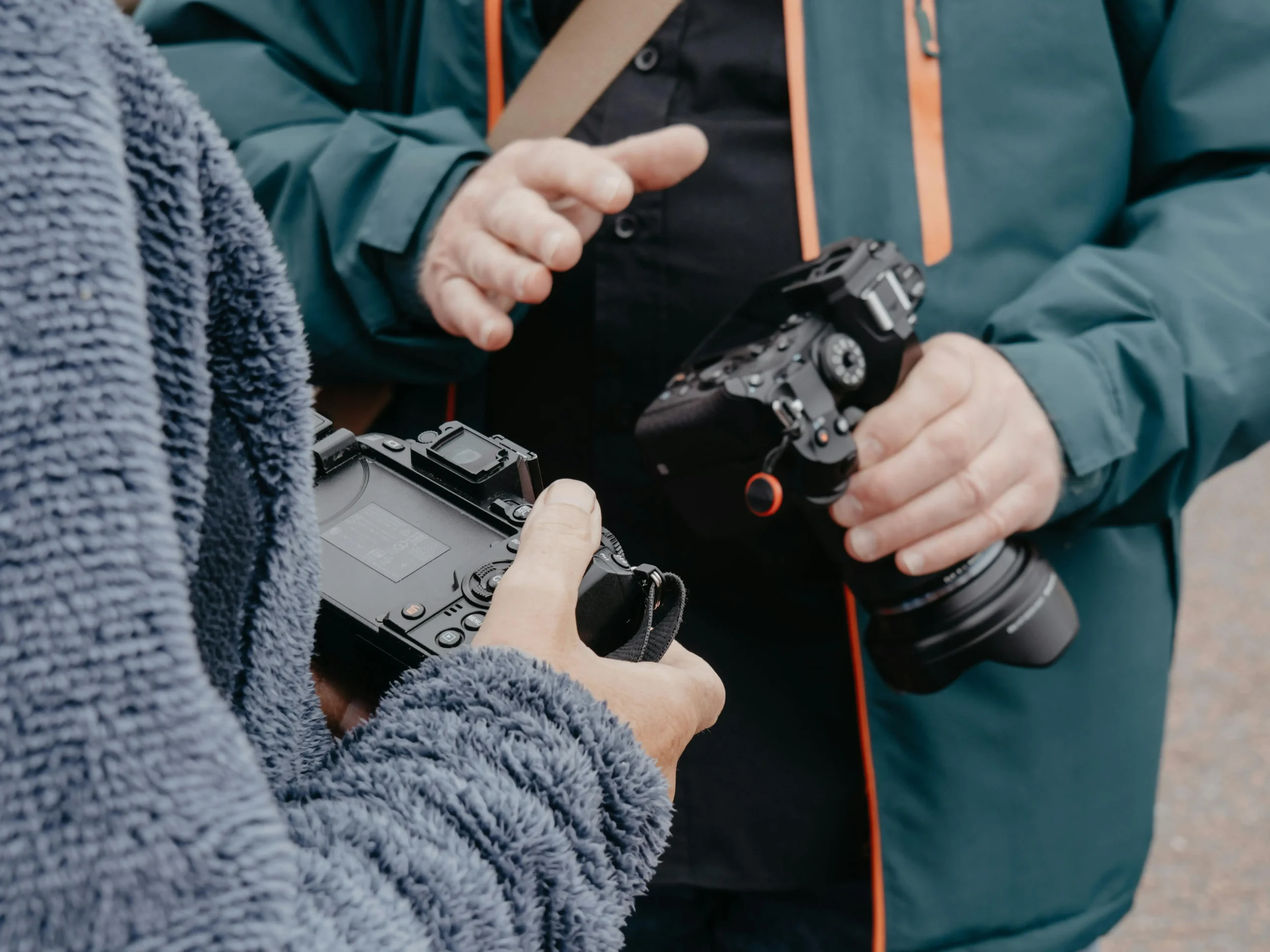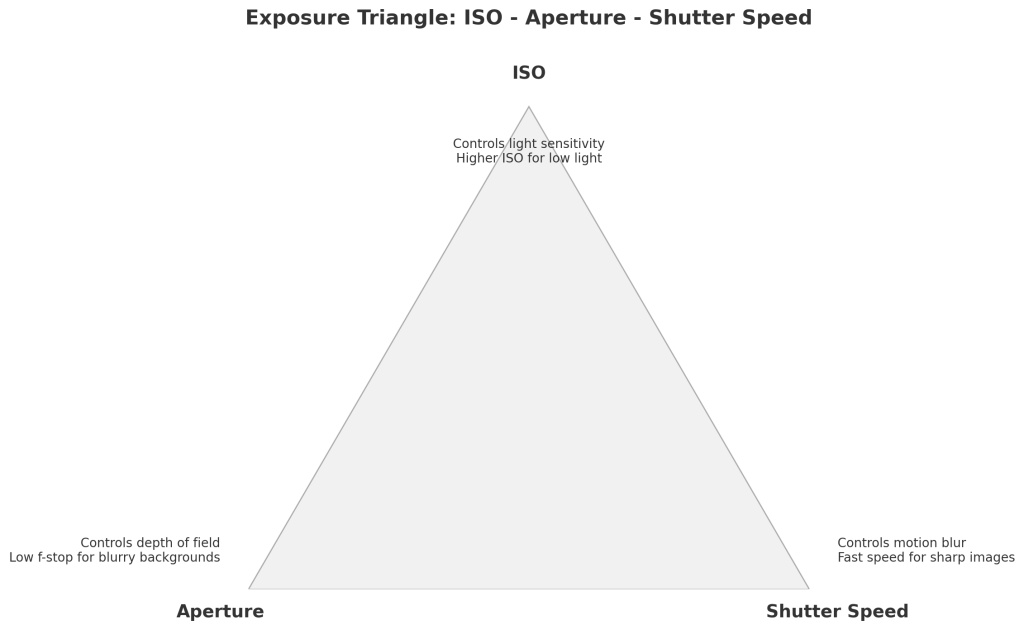Learning photography can be both exciting and overwhelming, especially with the endless techniques and camera settings available. To help you get started, we’ve compiled 10 essential tips that will set you on the path to capturing beautiful, professional-looking photos. Whether you’re shooting with a smartphone or a DSLR, these tips will elevate your photography skills.

1. Understand the Exposure Triangle
The exposure triangle consists of ISO, Aperture, and Shutter Speed—the three main settings that control exposure in photography. Here’s a quick breakdown:
- ISO: Controls the camera’s sensitivity to light. Lower ISO (100-400) is best for bright settings, while higher ISO (800+) works in low light.
- Aperture (f-stop): Determines the depth of field. Lower f-stops (e.g., f/1.8) create a blurry background, ideal for portraits; higher f-stops (e.g., f/16) keep more of the image in focus.
- Shutter Speed: Affects motion blur. Faster shutter speeds (1/500s) freeze motion, while slower speeds (1/30s or lower) create motion blur.

Experiment with these settings to see how each affects your image.
2. Focus on Composition Using the Rule of Thirds
Composition can make or break a photo, and the Rule of Thirds is an easy technique to create balanced and visually engaging shots. Imagine your frame is divided into a 3×3 grid. Place your subject along these lines or at the intersections to draw the viewer’s eye naturally. Most cameras and smartphones offer a grid overlay, which can help guide your composition.
3. Master the Art of Lighting
Lighting is one of the most important elements of photography. Natural light is usually best, so shoot outdoors or near windows when possible. Here are a few lighting tips:
- Golden Hour: The hour after sunrise and before sunset provides soft, warm light.
- Avoid Harsh Noon Sun: Midday sunlight can create harsh shadows. For portraits, seek shaded areas for softer, diffused light.
- Experiment with Backlighting: Place your subject in front of the light source for a dramatic, silhouetted effect.

4. Practice Depth of Field for Impactful Shots
Depth of field refers to the area in focus in your image. You can adjust it by changing the aperture. For portraits, use a low aperture (like f/1.8) to create a shallow depth of field, making the subject pop against a blurry background. For landscapes, use a higher aperture (f/8 or higher) to keep more of the scene in focus.
5. Get to Know Your Camera Settings
Today’s cameras have powerful capabilities that can enhance your photography. Spend time learning Manual Mode to take full control over your images, rather than relying on Auto. Experiment with different shooting modes, such as Aperture Priority (A/Av) for controlling depth of field or Shutter Priority (S/Tv) to capture motion.
6. Shoot in RAW for Maximum Editing Flexibility
RAW files retain more detail and allow for greater flexibility in post-processing than JPEGs. If you’re planning to edit your photos, shooting in RAW will give you more control over aspects like exposure, color, and sharpness, helping you achieve a polished final image.
7. Pay Attention to Backgrounds
Backgrounds can significantly impact the overall feel of your photos. Cluttered or distracting backgrounds can take attention away from your subject, so look for simple, clean settings or adjust your angle to find a better backdrop. In portraits, blur out backgrounds by using a wider aperture.
8. Try Different Angles for a Fresh Perspective
Don’t be afraid to move around and try different angles. Shooting from high, low, or side perspectives can bring a unique, creative touch to your photos. Experimenting with angles will help you discover new ways to capture ordinary subjects.
9. Learn Basic Editing Techniques
Editing can elevate your photos, but it doesn’t have to be complex. Simple adjustments like cropping, enhancing contrast, or tweaking brightness can make a big difference. Tools like Adobe Lightroom, Snapseed, and Photoshop offer beginner-friendly editing options to improve color, clarity, and sharpness.
10. Practice, Practice, Practice
Photography is an art, and like any skill, it improves with practice. Challenge yourself to shoot regularly, experimenting with different subjects, styles, and techniques. Join photography groups, follow tutorials, or take online courses to continue learning and stay inspired.
Conclusion
Photography is about creativity and self-expression. By mastering the basics and experimenting with different techniques, you’ll develop your unique style and capture stunning images. Remember, the journey is as important as the final result—so have fun, keep practicing, and let your creativity shine through!

